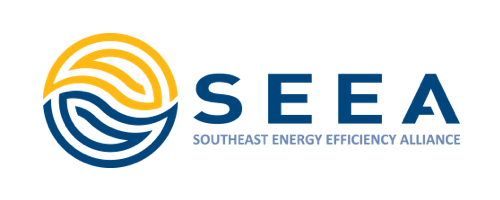Energy Foundation made its first grant to Southeast Energy Efficiency Alliance in 2010.
Research shows that the adoption of strong energy efficiency initiatives in the South would generate hundreds of thousands of new jobs, cut utility bills, sustain economic growth, and reduce the need for new power plants.
Nearly 3.5 million people are working to modernize the U.S. energy system as part of the advanced energy industry, driving economic growth in communities across the U.S. Advanced Energy Economy Institute (AEE Institute) supports this progress by educating policymakers and candidates on the economic power of moving forward with a modernized grid and electrified transportation.
Founded in 2006, the Southeast Energy Efficiency Alliance (SEEA) has established itself as a trusted, reliable, and expert resource when working with an array of unlikely allies in the 11-state Southeast region: from utilities, manufacturers, and government leaders to energy and environmental organizations, low-income energy advocates, and universities.
When Mississippi Governor Phil Bryant started work on the state’s first comprehensive energy plan in early 2012, SEEA organizers saw an opportunity. They met with lead staff members to share expertise, provide planning tools, and craft a suite of initiatives that would help the state meet its energy efficiency goals. That included new building codes, which save consumers money, reduce pollution, increase reliability, and provide quality and comfort.
In addition to serving as a go-to resource for state leaders, SEEA looked ahead and helped prepare those who would be key to successful implementation of the new codes, which in turn helped support their adoption. Organizers trained building code officials in enforcement best practices, discussed the new codes at a meeting of the Building Officials Association, and served on an educational panel alongside officials from the Tennessee Valley Authority and Mississippi Power at an event sponsored by the Mississippi Manufacturers Association and the state’s Department of Environmental Quality.
The Mississippi legislature adopted landmark pieces of legislation that year that strengthened the state’s investment in energy efficiency infrastructure. That included replacing an optional and outdated building code from 1975 with one of the most stringent model codes for commercial and public buildings (ASHRAE 90.1-2010).
For years, the state has occupied the lowest position in the American Council for an Energy Efficient Economy’s State Energy Efficiency Scorecard, the industry authority for tracking state-level energy efficiency activities. Thanks to the policies adopted in 2012, the state continues to make gains.
In 2018, the Mississippi Public Service Commission issued an order to investigate the development and adoption of an Integrated Resource Planning (IRP) process for regulated electric utilities in Mississippi. By establishing a uniform IRP policy the state will unleash energy efficiency and clean energy innovation, and give a boost to customer choice in the market.
